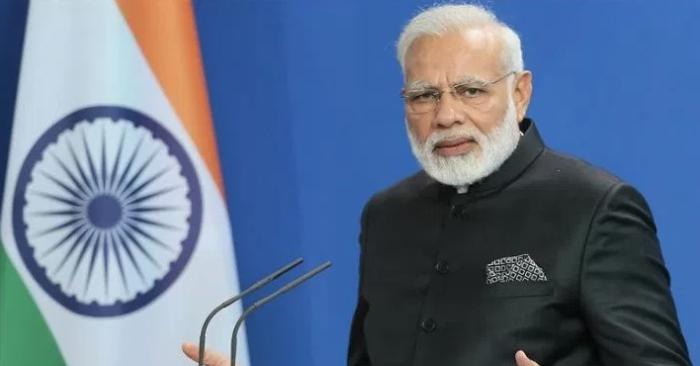Subscripe to be the first to know about our updates!

New Delhi Needs To Work Toward Demilitarization Of The Indo-Pacific Region
Manoj Kumar Mishra
Countries abutting the Indo-Pacific region ranging from the Southeast Asian littoral zone to the South Asian and the African littoral zone including small island nations such as Mauritius and Seychelles are considered strategically vital not only among growing powers of Asia such as China, India and Japan, the region figures prominently in the security concerns and strategic considerations among US, European countries specifically France and Australia as well. These powers are perceptibly becoming more assertive in the region both in economic and military terms.
While India’s strategic pre-eminence in the Indian Ocean region was assured by its geographic proximity and historical and cultural linkages, it sensed serious challenges to its privileged position from relatively more nascent but powerful Chinese sway in the region.
Further, in contrast to India’s economic engagements in Africa which have been led by the private sector and are rooted in deep commercial and cultural ties, China’s engagement largely focused on resources and infrastructure and moved in the shape of government-to-government lending.
In addition to the economic penetration of China in the Indo-Pacific region through Belt and Road Initiatives (BRI) and Infrastructure-building (which could used both for civilian and military purposes), inauguration of its first overseas naval base in Djibouti in summer of 2017 in the African coast to acquisition Hambonttota port in Sri Lanka and development port facilities in Gwadar, Pakistan propelled a sense of urgency in New Delhi to contain Beijing’s alleged ‘String of Pearls’ strategy (containment strategy). In Maldives, news reports devoted considerable attention to speculations as to the dynamics of the India-China competition following the defeat of the Abdulla Yameen’s government by opposition leader Ibrahim Mohamed Solih in the September elections last year.
There has been a surge in the visits of the Chinese President Xi Jinping and Indian Prime Minister Narendra Modi to the littoral countries in recent years. New Delhi’s launching of the Asia-Africa Growth Corridor (in partnership with Japan) in 2017 was viewed as an alternative to China’s Belt and Road Initiative. Prime Minister Modi’s visit to the Seychelles in 2015 resulted in the signing of a 20-year pact with the nation to build an airstrip and a jetty for its navy on Assumption Island. New Delhi agreed to invest $550 million in building the base to secure its vessels and others in the southern Indian Ocean. However, President Danny Faure of the Seychelles informed parliament later that he would not take up the Assumption Island project with India which was viewed New Delhi’s defeat to Beijing in the strategic competition in the region.
In an effort to enhance its footprint in the Southeast Asian shores, India while signed a deal with Singapore to expand its access to Changi naval base in November 2017, it undertook efforts to enhance its influence in the African shores by contributing to the development of Agaléga in Mauritius with dual-use logistical facilities as well. New Delhi has also sought to enhance its role in its own territorial shores with a focus on developing 10 priority projects, including a planned transshipment hub at Campbell Bay in the Andaman and Nicobar Islands.
Possibilities of Enhanced Military Confrontations
While the small countries in the region were seen aspiring for maintaining neutrality and independence amid strategic competition among the major powers on the one hand, India-China strategic competition in the region has facilitated greater intervention from the external powers in the Indian Ocean giving rise to varied power configurations and alliances and enhanced possibilities of military confrontations on the other.
For instance, India and France were witnessed signing the “reciprocal logistics support” agreement as part of which warships of both the nations would have access to each other’s naval bases in the Indian Ocean. The Indo-Pacific thrust in the American foreign policy and mutual desire to contain and roll back Chinese influence in the region, India and the US signed the Logistics Exchange Memorandum of Agreement (LEMOA) in 2016 and Communications Compatibility and Security Agreement (COMCASA) in 2018, facilitating access to each other’s designated military facilities for refueling and supplies, sensitive technology transfer and interoperability.
The members of the Quad, involving the United States, Japan, Australia and India are not only meeting frequently in recent months to discuss and pass resolutions reinvigorating their role in maintaining free, open and rules-based Indo-Pacific, possibilities of their enhanced military profile and security strategies have grown as well. Washington’s robust military presence in the Pacific has been secured by military bases ranging from Guam in Micronesia to Okinawa (a string of islands in the East China Sea that belong to Japan) and its influence in the larger Indo-Pacific region has been maintained by robust naval presence spanning from Bahrain to Singapore with Diego Garcia in the middle.
On the other side, La Réunion, located in the south-west of Mauritius, has remained the centre of French naval military operations in the Indian Ocean. India has sought agreements with Australia, France and the US to gain access to bases such as Cocos Islands (Australia) and La Réunion (France).
The US decision to withdraw from the 1987 Intermediate-Range Nuclear Forces (INF) treaty which aimed at eliminating conventional and nuclear missiles ranging from 500 to 5,500 km from the American and Soviet (now Russian) arsenals will contribute to Chinese speculations about the American military designs in the Indo-Pacific.
While on the one hand, China would take steps to enhance its deterrence capacities in the region, the US and other major powers have now greater leeway in breaching them. Unless a fresh treaty to contain conventional and nuclear ambitions of these powers comes into existence, possibilities of military confrontations will rise further. Efforts toward demilitarizing the Indo-Pacific region and promoting it as a ‘zone of peace’ must be considered crucial by New Delhi in this context.
Source; Eurasia Review